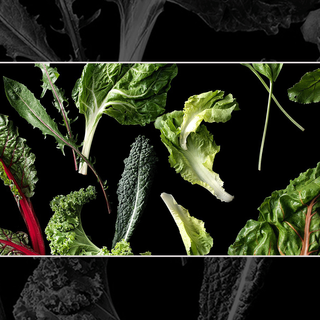A new study finds that when children are told food benefits they can relate to — for instance, “eat your lentils if you want to grow bigger and run faster,” and “tomatoes will keep you from getting sick” — they eat twice as healthy and are more likely to try new foods, as opposed to when they are given food with no contextual information.
Published in the Journal of Nutrition Education and Behavior, this study was led by scientists at Washington State University and Florida State University in the U.S.
“Every child wants to be bigger, faster, able to jump higher,” said Jane Lanigan, associate professor in the WSU Department of Human Development and lead author of the study, in a statement. “Using these types of examples made the food more attractive to eat.”
Related on The Swaddle:
Stressed Parents Make Unhealthy Food Choices for Children
Previous research shows offering foods repeatedly increases the likelihood that kids will try something new. But that research didn’t look at the context of those offerings, Lanigan said.
In their study, Lanigan and her colleagues wanted to see if affirmative statements that convey relatable benefits of healthy food had any impact on young children and their choice of food.
For the study, the WSU and FSU research team ran an experiment where they offered healthy foods to a group of 3- to 5-year-old children for six weeks.
In the beginning, the 87 children in the experiment ranked how much they liked four foods chosen from different food groups, including green peppers (vegetable), tomatoes (fruit), quinoa (grain), and lentils (protein).
The kids were then offered two of the foods they liked the least, twice a week. Over the six-week experiment, the researchers presented the children one of their low-rated foods with pre-selected, age-appropriate facts about the benefits of the food. The other food was merely given to them to taste.
A coin flip determined which food would be paired with which relatable, affirmative statement. To determine the influence of these statements, the researchers measured how much the kids ate the related food item pre-test, post-test and one month after the study ended.
“The immediate post-test showed no result, likely because the kids got sick of eating the same foods,” Lanigan said.
Related on The Swaddle:
How to Get Fussy Eaters to Eat the Food You Give Them
However, the month after the measurement had a different story to tell.
“We found that a month later, the kids ate twice as much of their [affirmative, relatable statement] food with the repeated exposure compared to the food without the positive words,” Lanigan said. “For example, when we presented lentils we would say, ‘This will help you grow bigger and run faster.'”
Over a period of time, Lanigan and colleagues’ study shows that explaining health benefits in a relatable way is likely to impact and increase the amount of healthy food that children chose to eat.
Using her own example, Lanigan added, “I have two kids and I probably could have done things differently when trying to get them to eat healthier.” She also said, “We wanted to fill a gap, where parents are often told what their kids should be eating but not how to get them to eat it. And that’s really important.”




